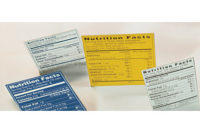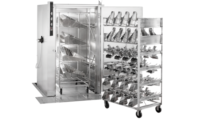This past year has been an exciting one for the baking industry, especially in terms of the progress made on revising the ANSI/ASB Z50.2 Bakery Equipment Sanitation Standard (formerly known as the “BISSC Standard”). Representatives from across the baking industry, including bakers, bakery engineers, bakery equipment manufacturers and academics have come together to give their input on updating this standard.
The importance of the sanitary design of food processing equipment has increased in recent years, mainly due to the escalating focus on allergens and microbiological issues that have resulted in recalls.
The Centers for Disease Control reports that foodborne illness outbreaks in 2010 cost the United States $77.7 billion. In addition, according to a study published in the Journal of Allergy and Clinical Immunology, medical costs due to reactions to food allergens are believed to be in the $200-$300 million range. Equipment and facility design and maintenance have a role in preventing food safety issues, as evidenced by the attention given by the Global Food Safety Initiative’s auditing programs.
With the passing of the Food Safety Modernization Act in 2010 (FSMA) and regulations outlining compliance requirements, food processors will be under even greater scrutiny by the Food & Drug Administration. The baking industry needs to be forward-thinking in terms of the design of their equipment and the ability to effectively clean production equipment.
When much of today’s equipment for bakeries was designed and put into service, the food industry wasn’t faced with the FSMA requirements. Microbiology and food allergen issues weren’t yet driving forces in the industry. These issues bring a new light to how bakery equipment is designed, and the need to eliminate niches within the equipment that can serve as harborages for microbes and allergens as well enhancing the cleanability of the equipment.
When purchasing or replacing a piece of equipment, the re-occurring labor costs for cleaning that equipment is an essential consideration. There is a fine balance between the cost of the labor needed to effectively clean and maintain existing equipment and the cost of investing in properly designed new equipment. Then there’s the potential cost of a product recall due to an inability to appropriately clean a piece of equipment. The revisions to the Z50.2 Standard have to take into account the sanitary design of equipment in order to prevent product contamination.
Years ago, the BISSC standard was adopted by the American Society of Baking (ASB) and is now an American National Standards Institute (ANSI) standard identified as ANSI Z50.2. The ANSI process provides a system to develop a consensus standard involving all stakeholders. This past year marked a milestone when the formation of nine working groups, tackling different portions of the standard, led to a substantial redraft of the document. The suggested revisions were submitted to the ASB Z50 Committee for a vote. Once the revisions are approved, they will be put out for public comment and ultimately can be passed on for final approval by ANSI.
This task is not complete. ASB Z50 is a “living document,” and needs to be continually updated. Additional equipment groups must be defined and more comments are needed to ensure that the standard is effective in meeting industry, regulatory and consumer needs.
SAGE Food Safety Consultants, LLC, Cincinnati, is the consulting firm retained by ABA, the American Institute of Baking (AIB) International and Bakery Equipment Manufacturers and Allieds (BEMA) to facilitate this project, and will be at the upcoming ASB BakingTech 2012 conference in Chicago, March 4-7. Gale Prince and Jennifer Frankenberg from SAGE will provide an update on the project at an ASB breakout session on March 6.





